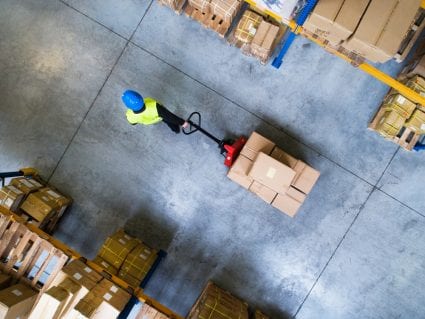The rise of eCommerce is an inexorable one, with real-world ripple effects that extend all the way to feet and wheels on the street — and, by extension, burgeoning payrolls.
To that end, hiring within the logistics sector has gained ground, even beyond the holiday season. This has given rise to the structural shift in the job market, as Amazon and other firms strive to meet the growing demands of one-day and even same-day delivery.
In terms of headline numbers, the U.S. Bureau of Labor Statistics said at the end of last week that January saw the 11th straight month of gains within consumer and messenger jobs, with the latest month showing 14,300 new jobs added.
The Wall Street Journal reported that the January numbers come in tandem with upwardly revised stats for 6,700 parcel sector jobs that had been seen in December. One key driver has been the growth in weekend deliveries. Warehouse and storage jobs also grew in January by 5,700 positions, and trucking jobs were up 3,200 positions.
The gains come in stark contrast to the 12,000 positions cut within the manufacturing sector, indicating a shift from capital goods production to a service economy (the service being delivery, of course).
To get a snapshot of where the hiring power may lie, consider the headlines that came last month. One aviation and trucking company, Pinnacle Logistics, operating from Maryland’s BWI Thurgood Marshall Airport, said it would lay off 1,600 people this year. Yet, as reported in the Capital Gazette, Amazon has offered to hire the hourly workers at that same location, and they would be taken on as Amazon associates.
As noted in this space in December, Amazon said it employs 800 third-party courier companies — or “delivery service partners” — that manage 75,000 drivers. The company now has 150 U.S. delivery stations, employing more than 90,000 people.
Separately, but also in December, Morgan Stanley released a report stating that Amazon is already delivering around half of its own packages. Volume will soon surpass FedEx and UPS — Amazon is now shipping packages at a rate of 2.5 billion a year, while UPS is estimated to ship 4.7 billion and FedEx 3 billion, according to reports.
“We see more of this going forward, as our new bottom-up U.S. package model assumes Amazon Logistics U.S. packages grow at a 68 percent [compound annual growth rate from 2018 to 2022],” Morgan Stanley said at the time.
That would mean Amazon could be shipping as many as 6.5 billion packages a year by 2022.
Another Gauge Of Demand
Separately, and in another gauge of logistics as a hiring hub, Cushman & Wakefield reported that industrial and logistics real estate will see continued growth through the remainder of 2020 and beyond. As relayed by Material Handling and Logistics, projections are that eCommerce growth will continue to put “upward pressure” on occupancy and rent growth across the logistics space. The nod toward upward occupancy trends indicates a boost in head count needed to fill that space — which, of course, implies hiring in the sector.
At least one major logistics player, Prologis, has estimated that there will be — in this year alone — net absorption of between 250 million and 275 million square feet of completions, with low vacancy rates of around 4.6 percent. Positive net absorption means that more space was leased than was supplied by vacancies or new supply.
“Logistics real estate demand was diverse and strong, supported by cyclical and structural trends,” the company recently said, adding that “cyclical and structural growth drivers are incentivizing customers to invest in logistics capabilities to generate revenue and achieve operational efficiencies. Supply is responding to years of strong demand, robust market rent growth and tight operating conditions.”




